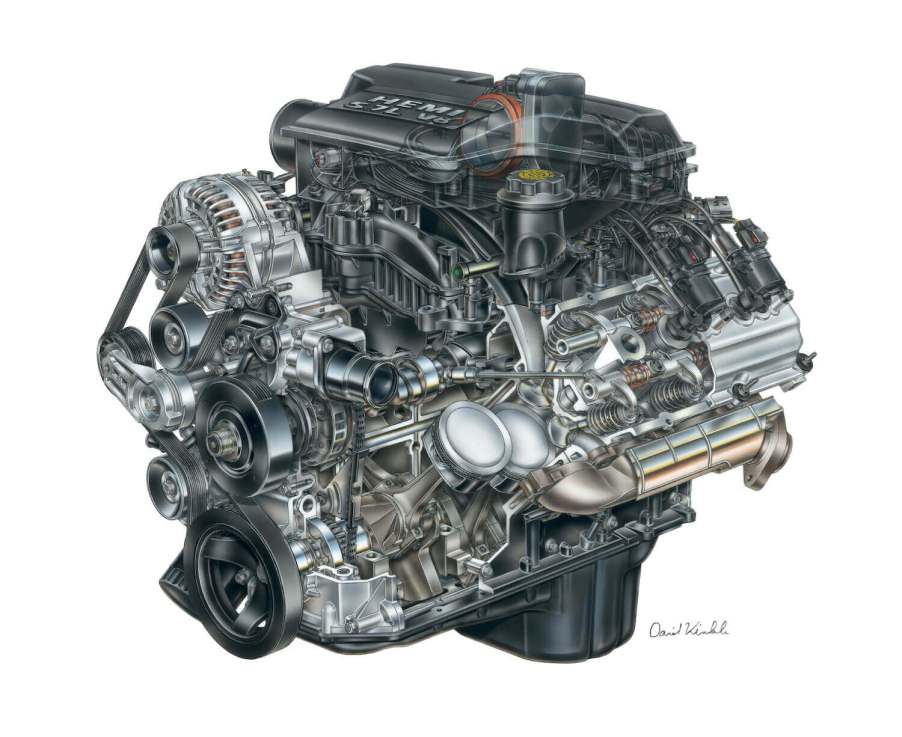
Small Engine Scam? Ram 1500’s Final V8 and Tundra’s First Turbocharged V6 Get Identical MPG
We’re at a unique point in automotive history as truck manufacturers slowly replace naturally-aspirated V8s with smaller turbocharged engines. As a result, we have the latest Toyota Tundra with its pioneering twin-turbocharged 3.4-liter V6 competing with the Ram 1500 ‘s 5.7-liter Hemi V8. Over the years, Ram has stepped up this V8’s efficiency with an arsenal of new technologies. The result is that the two very different trucks actually get identical fuel mileage.
Is the Tundra’s V6 more efficient than a V8?
The Ram 1500’s old V8 and the Toyota Tundra’s new turbocharged V6 are very different engines, utilizing very different technology. Yet their official fuel mileage ratings are identical. Here’s how the EPA’s number break down by category and configuration.
| Truck | City | Highway | Combined |
| 4WD Ram 1500 V8 | 17 mpg | 22 mpg | 19 mpg |
| 2WD Ram 1500 V8 | 18 mpg | 23 mpg | 20 mpg |
| 4WD Toyota Tundra | 17 mpg | 22 mpg | 19 mpg |
| 2WD Toyota Tundra | 18 mpg | 23 mpg | 20 mpg |
Reviewers have noted that these government fuel economy numbers represent very fuel-efficiency-conscious driving. If you really dig into either truck’s accelerator pedal, you’ll watch the mpg fall off dramatically.
The Hemi Ram 1500 is a living legend
The Chrysler Corporation built its first Hemi V8 in 1951. The engine immediately began dominating the drag strip and remained a favorite powerplant for hot rod builders for decades. The V8 still available in Ram pickup trucks is the third generation of the first family of V8s.

Chrysler Corporation introduced the third-gen Hemi V8 in the 2003 Dodge Ram pickup trucks. Since then, Ram has done everything possible to optimize the big engine’s mpg.
When cruising on the interstate, the Ram can shut off a few cylinders to save fuel. When you hit the brakes, its mild-hybrid system uses a combined starter/alternator to slow the truck and charge its battery, then launches it from a standstill. If you upgrade the truck with four-corner air suspension, it will drop down at high speeds to reduce wind resistance. This truck can even deploy an active front diffuser like you see on supercars.
But all of this tech won’t be enough to save the Hemi. The Ram 1500’s Hemi V8 is very much a living legend, its days are numbered. Stellantis has already introduced the twin-turbocharged 3.0-liter “Hurricane” I6, which will likely replace this old V8. In 2023, you can only get the Italian-engineered I6 in a Jeep Wagoneer. But Stellantis announced the chassis the sixth-gen Ram will share with other vehicles is not engineered for V8s, just the I6.
The Toyota Tundra signals a new era

Ford began offering its turbocharged 3.5-liter EcoBoost V6 in the 2011 model year F-150. The rest of the world’s truck manufacturers watched and waited. The Blue Oval managed to keep the engine cool enough and reliable enough to win over thousands of V8 fans buying their next truck.
Toyota tossing all of its V8s in favor of a 3.4-liter turbocharged V6 signals a new direction for the entire industry. The automaker rarely redesigns its Tundra, so it must be confident that this engine choice will keep its half-ton truck relevant for a long time.
The new Toyota Tundra V6 spent several years in the Lexus LS500 sedan before the automaker felt it was ready for duty in the truck. It makes 389 horsepower (vs the Ram V8’s 395), and 479 lb-ft of torque (much better than the Ram V8’s 410). A handful of early 2022 engines suffered a turbocharger failure and went into limp mode, but no owners have reported the problem since Toyota swapped suppliers for a malfunctioning component. Today, the only real downside of the Tundra’s engine is a bit of turbo lag.
Next, see how the Tundra’s V6 compares to Ram’s new I6, or watch the current Tundra and Ram compared in the video below:





